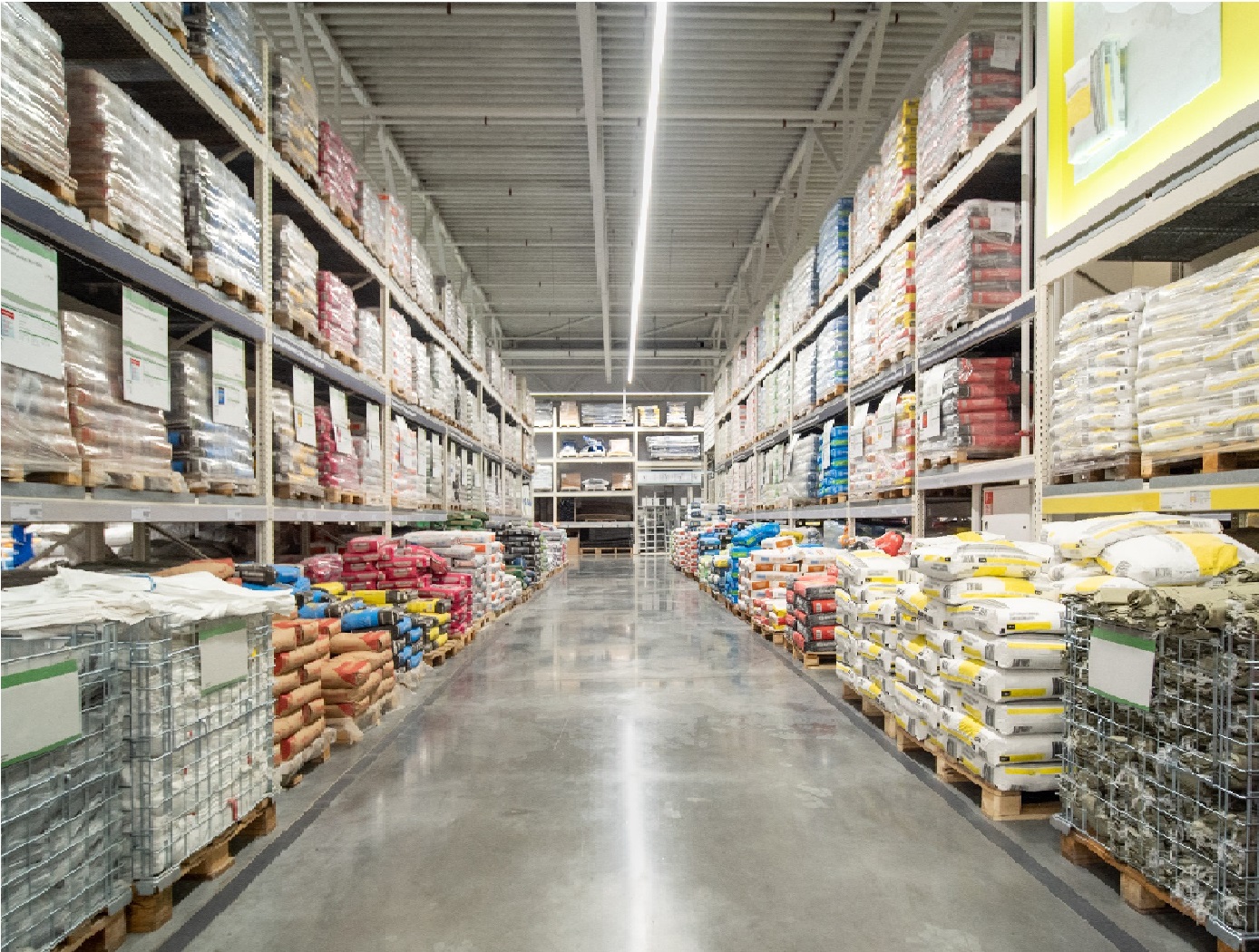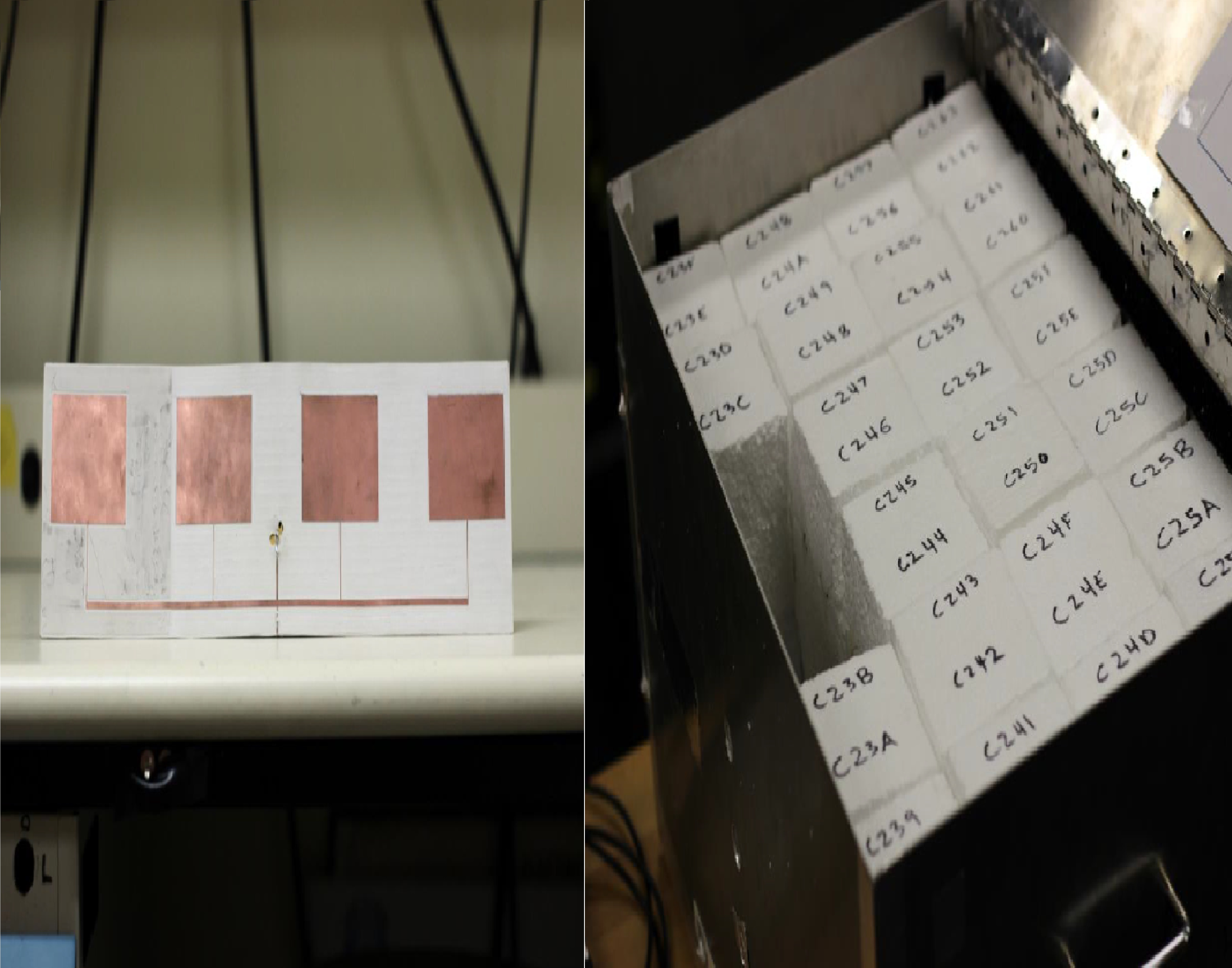Agile RFID Antenna System
Sensors
Agile RFID Antenna System (MSC-TOPS-79)
Uses a Frequency Multiplexer to boost reader performance for localization and read accuracy
Overview
Researchers at the NASA Johnson Space Center have developed a suite of RFID-based technologies focused on improving communication of an RFID reader with a greater number of RFID tags in open and enclosed areas. Typically, RFID reader communications with tags are spectrum-regulated to a narrow bandwidth that makes tag localization difficult. Moreover, RFID communications are complicated by polarization mismatches between the reader and tag antennas. The Agile RFID Antenna System is able to expand these boundaries by integrating an inexpensive frequency multiplexer to the RFID reader antennas, which permits new methods of localization, allows greater antenna functionality with fewer reader RF ports, and provides improved read accuracy and/or range. For enclosed areas, such as a large container, the Agile RFID Antenna System can use smaller antennas, consequently reducing the volume required for an RFID system to operate. A wide range of commercial applications can benefit from this technology, including retail inventory management, manufacturing/assembly line tracking, industrial transportation and logistics, sports bio-analysis, and healthcare.
The Technology
Current RFID readers, such as the EPC Global Class 1 Gen 2, are limited by narrow bandwidth restrictions, maximum transmit power, and a limited number of RF ports, which results in relatively coarse ranging resolution and accuracy, limited techniques for localization, and limited antenna functionality. Some of the currently available solutions, such as using larger antennas or adding switched multiplexers, often result in unacceptable cost, volume, aesthetics and mass penalties. The Agile RFID Antenna System integrates a frequency multiplexer into the RFID reader antenna system to provide greater antenna functionality without requiring additional reader RF ports, resulting in improvements in reader-tag communications read accuracy, read range, and localization.
The Agile RFID Antenna System is at a TRL 8 (Technology has been proven to work in its final form and under expected conditions) and has been used on the International Space Station to support logistics management and it is now available for your company to license and develop into a commercial product. Please note that NASA does not manufacture products itself for commercial sale.


Benefits
- Flexibility: supports both open and enclosed tracking applications
- Efficiency: increases read accuracy and range
- Technology Integration: can be integrated into standard EPC Global Class 1 Gen 2 RFID Reader without modifications to the reader
- Low Power Requirement: increases RF power available to the tag and returned from the tag
Applications
- Retail Inventory Management: reduces the footprint of the system to track inventory
- Manufacturing/assembly line tracking: tracks and manages parts, tools, equipment, and personnel at various types of industrial plants
- Industrial transportation and logistics: tracks shipment of boxes and containers for trucking, shipping, air transport and just about any other type of freight
- Sports Bio-Analysis: analyzes movement and position of players, limbs, joints, etc.
- Healthcare and Pharmaceuticals: track position and location of medicines, supplies, patients, staff, and equipment
Technology Details
Sensors
MSC-TOPS-79
MSC-25843-1
MSC-26339-1
MSC-26340-1
MSC-26341-1
MSC-26341-2
|
Related Links:
|
Similar Results

RFID Tags Collaborate for Data Retrieval
Commonly used RFID protocols are widely accepted because they are inexpensive and easy to implement. However, the associated low transmit power and narrow bandwidth typically result in coarse local-ization estimates. Often it is desirable to know the precise location of assets without reverting to an entirely different and more expensive protocol. Additionally, many industrial and other applications may desire technology that confirms the mating of components. This new program-mable sensor tag technology facilitates both precise localization and mating confirmation in-part by allowing the RFID sensor tag to become a type of distributed low-cost reader.
To determine a tag attachment, this innovation utilizes a fixed location RFID sensor tag that incorporates a receptacle node to measure an electrical “influence” through resistance, capacitance, inductance, etc. Assets for which localization is desired are outfitted with “influence tags” – devices that produce a set of distinguishable responses when placed in the receptacle region of the RFID sensor tag. Mating or connections are confirmed when electrodes from an influence tag become attached to matching electrodes on a sensor tag’s receptacle node. Information obtained by the RFID sensor tag is stored in its local memory bank through which a dedicated reader can retrieve influence tag information.
Potential applications exist for this technology where specific assets need to be precisely located and/or confirmation is needed when two parts have been correctly connected or attached. This RFID tag technology allows the retrieval of inventory status information in an energy efficient manner from inexpensive, small form factor hardware. Robotic retrieval of assets can be more easily facilitated with this innovation.

Hyper-Distributed RFID Antenna (HYDRA) System
Components of the HYDRA system include an RFID reader (aka an RFID transceiver or interrogator), RF cables, antennas, and one or more Intelligent Multiplexer Modules (IMMs). The IMM is the core building block of the HYDRA system. In one of its basic embodiments, the IMM comprises an RF directional coupler, RF switch, RFID chip, micro-controller, and power generation and management hardware. In this basic implementation, a single RF port from the RFID reader is attached to the IMM and transfers power thereto. Internally within the IMM, the RF directional coupler diverts a small amount of RF power to rectification and power management circuitry for conversion to DC power that drives the RFID chip, microcontroller, and RF switch. The RFID chip enables communication with the RFID reader and allows the reader to administer changes to the microcontroller‘s embedded software. The microcontroller controls the RF switch, which passes power along to one or more output channels. Connections to the output channels can include antennas, additional IMMs, or other sensors.
The HYDRA system may include numerous alternate embodiments to enhance and customize the basic functionality. In one embodiment, the microcontroller is replaced with a simple timer. In another embodiment, the switch has multiple output ports to connect to a distributed chain of HYDRA system or local antennas. Also, the entirety of RF power exiting a HYDRA module can be rectified and used to power a local sensor node, which could be implemented via WiFi or Bluetooth Low Energy (BLE). Features of the HYDRA system include the ability to cover both open regions and enclosures, the ability to switch RF power to an unused load for assisting in the resolution of tag antenna ambiguities, and the ability to accept plug-and-play add-ons such that the reader’s software can use the system without requiring any embedded modifications.
The HYDRA system is technology readiness level (TRL) 7 (system prototype demonstrated in an operational environment) and is now available for patent licensing. Please note that NASA does not manufacture products itself for commercial sale.

RFID Tag for Long Range and Wide Coverage Capabilities
The RFID Tag with Long Range and Wide Coverage Capabilities technology allows a RFID tag to direct a RFID reader beam signal back in the direction of arrival. This technology requires no added power to provide telemetry for long range readers by using multiple beams instead of one narrow beam signal. Each of the predetermined number of beams is typically associated with a unique identification number to derive bearing information. This innovation is suited for IC-based RFID tags as well as Surface Acoustics Wave (SAW) tags, which are useful for extreme environments.
The technology improves the ability to obtain telemetry (quantity, location, or sensor information) without GPS over a distant range. When the tag reports its identification, it also provides angular information to the source, which makes this technology useful for navigation and mapping applications. Because the technology provides an estimated angle between the signal antenna and the surface of each tag, the technology is able to triangulate the position of a mobile item identified with a RFID tag. The same innovation can be integrated to a RFID reader in order to enhance its range and distribute power to passive tags. The innovation has commercial applications in construction, oil and gas, seaport/harbor management, Internet of Things (IoT) and many more industries.

RFID Range Extension and Priority Data Forwarding
This novel technology builds upon a previously (NASA-developed) store-and-forward overlay architecture using COTS RFID protocols for BAP devices. It enables the range-extension and priority forwarding of critical sensor-collected data, even when an RFID interrogator is not in range. With this method, an RFID sensor maintains data queues of varying priority, maintaining at least one high priority queue.
When high priority data is collected, the RFID sensor activates a BAP mode that enhances the effective range of the RFID link to the interrogator. After high priority queues are cleared, BAP mode is deactivated to preserve onboard battery life and passive RFID operations resume for proximity-based data delivery.
This technology may deliver the most value in applications where long battery lifetime and remote sensing/data collection are essential and when regularly scheduled data transfer may not be available or possible if the target is out of the normal coverage area. The RFID sensor tags described here can operate in a low to no power mode and collect data until a trigger or threshold value is measured. At this time, the critical data can be transmitted from outside passive RFID coverage areas to the nearest interrogator.
Although this technology was developed to enhance the effective range of CO2 sensors worn by astronauts aboard the International Space Station, it could find additional applications in food, pharmaceutical, and other industries whose perishable and/or fragile goods rely on a stable climate throughout the transport and storage lifecycle.

Wearable RFID Sensor Tags Yield Extended Operational Times
This technology exploits the inherently passive nature of RFID to approximate the services provided by traditional active Internet of Things (IOT) protocols like ZigBee and Bluetooth. A novel store-and-forward overlay on COTS RFID protocols allows an RFID active tags to transit through an ecosystem of RFID interrogators, exploiting contact opportunities as they arise and quietly transfers sensor readings at nearly no power cost to the RFID active tag. Specific intelligence built into both the interrogator and the tag leverages the RFID tag user memory (UM) as a stand-in IOT interface. The tag operates by sampling data into timestamped packets and loads them into tag memory. When an interrogator in the ecosystem realizes that a tag is in view and that there is unrecovered data on the tag, it takes custody of the sensor data packet and offloads the data into a database. A smart scheduler reads from the population of interrogators and schedules data transfers for specific tags when an interrogator can seed the custody transfer process for the data packets. NASA has produced working prototypes of wearables, worn by the crew aboard the International Space Station, that reports humidity, temperature and CO2 readings. In one estimate, the battery life is on pace to last an estimated nine years.
The Low-Power RFID to Collect and Store Data From Many Moving Wearable Sensors is a technology readiness level (TRL) 6 (system/subsystem prototype demonstration in a relevant environment). The innovation is now available for your company to license and develop into a commercial product. Please note that NASA does not manufacture products itself for commercial sale.



